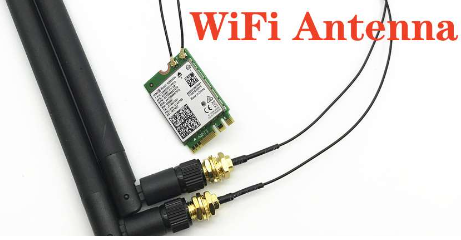Exploring the World of WiFi Antennas: Enhancing Connectivity and Performance
Introduction
In today’s digital age, where wireless connectivity plays a crucial role in our daily lives, WiFi antennas have become indispensable. These small yet powerful devices are responsible for transmitting and receiving wireless signals, enabling us to access the internet from our homes, offices, and public spaces. In this blog, we will delve into the fascinating world of WiFi antennas, exploring their types, functionality, and how they contribute to enhancing connectivity and performance.

I. Understanding WiFi Antennas
A. What is a WiFi Antenna?
- A WiFi antenna is an electronic device designed to transmit and receive radio signals in the WiFi frequency range.
- It facilitates wireless communication between devices, such as laptops, smartphones, and routers, by converting electrical signals into radio waves and vice versa.
B. Types of WiFi Antennas
- Omnidirectional Antennas
- Omnidirectional antennas radiate signals uniformly in all directions.
- They are suitable for providing WiFi coverage in all areas of a home or office without requiring precise alignment.
- Common examples include dipole antennas and monopole antennas.
- Directional Antennas
- Directional antennas focus the WiFi signal in a specific direction, providing concentrated coverage.
- They are ideal for long-range connections and point-to-point links.
- Examples include Yagi antennas, dish antennas, and panel antennas.
- High-Gain Antennas
- High-gain antennas amplify the signal strength, allowing for extended range and improved performance.
- They are useful in scenarios where the WiFi signal needs to reach distant areas or penetrate obstacles.
- Examples include parabolic grid antennas and sector antennas.
II. Factors Affecting WiFi Antenna Performance
A. Antenna Placement
- The placement of a WiFi antenna significantly impacts its performance.
- Optimal placement involves minimizing obstructions, such as walls and furniture, and maximizing line-of-sight with the desired coverage area.
- Experimentation and positioning adjustments can help achieve the best signal strength and coverage.
B. Signal Interference
- WiFi signals can be affected by various sources of interference, such as neighboring WiFi networks, microwave ovens, and cordless phones.
- Careful selection of the WiFi channel and using antennas with good interference rejection capabilities can mitigate these issues.
C. Antenna Gain
- Antenna gain refers to the amplification of the signal in a specific direction.
- Higher gain antennas provide increased coverage distance but have a narrower coverage angle.
- It is essential to balance antenna gain with coverage requirements to ensure optimal performance.
D. Antenna Diversity
- Antenna diversity involves using multiple antennas to improve the reliability and quality of the WiFi signal.
- By selecting the best antenna based on signal strength or quality, the system can mitigate signal fading and improve overall performance.
III. Extending WiFi Range with External Antennas
A. Upgrading Router Antennas
- Many routers come with detachable antennas that can be replaced with higher-gain alternatives.
- Upgrading the antennas can enhance signal strength and extend the WiFi range.
B. WiFi Range Extenders
- WiFi range extenders, also known as repeaters or boosters, are devices that capture and rebroadcast WiFi signals.
- They use built-in antennas to receive and transmit signals, effectively extending the coverage area of the existing WiFi network.
IV. Conclusion
WiFi antennas play a pivotal role in ensuring reliable and efficient wireless connectivity. By understanding their types, functionality, and factors influencing performance, users can optimize their WiFi networks to meet their specific needs. Whether it’s selecting the right antenna type, optimizing placement, or upgrading existing equipment, these considerations contribute to improved signal strength, extended range, and enhanced overall performance. So, embrace the world of WiFi antennas and enjoy seamless connectivity in this increasingly connected world.
